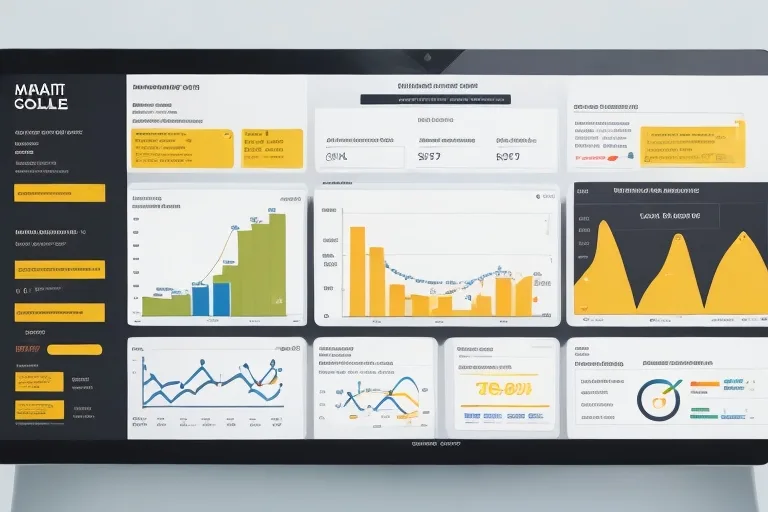Email marketing has been improved by behavioral email marketing. Under this, rather than mass emailing, we primarily focus on sending emails based on user activity. Data is the most underutilized asset in their company, according to 87% of marketers.
We can understand it with a modern world example of branded shopping stores and small retail stores. When we enter a small retail store, the staff approach us by saying, “How can I help you?” Unlike, a branded store staff lets us explore the store first. When we explore some products, they approach us by asking, “Are you looking for this or that product?” Do you notice how big brands address you based on what products you looked at rather than when you entered the store?
It is a more specific and accurate way to assist the customers. The same concept applies to behavioral email marketing. We aim to provide targeted guidance based on how the user explores our content. Let’s understand how we can use behavioral email marketing.

Kind of Behaviors for Behavioral Email Marketing
Before we jump on how to use behavioral email marketing, we must understand the kind of behaviors a user may perform. Think of it as a normal one-on-one conversation with your customer.
Generally, we make conversation with a customer and try to explore what problem they are facing. And, we suggest an appropriate solution. We do not have a one-on-one discussion in emails, so we try to figure out the problem by observing customer behavior.
Reading a blog, signing up for a webinar, taking a survey, or simply clicking on a link can be triggered as a behavior. These behaviors might vary based on your specific industry, but I believe all will fall in one of the below categories.
Email Interactions
When users open our email, it tells us that they found the email related. It shows us about the interest of the user. Hence, we can continue to send similar emails to the user. Similarly, we must observe the click-through rate.
The other side of the story is if the user is not opening our emails. It clearly suggests that we have done something wrong with the subject lines or emails we sent earlier. The user is not interested, and we might need to change our subject lines or identify what the user wants.
We can send different emails to the people who opened our email and who did not.
Website Interactions
I find website interactions the most effective behavior for behavioral email marketing. User-absorbed content on your website signals user interest. You can track clicks, articles read, explored services, time spent on a particular topic, user entry and exit point, user searches, and other practical insights.
When you collect all this information, you start to see patterns. You can then use these patterns to establish your email marketing strategy. For example, every time you publish a new article that fits the interests of a group of users, you can send an email and encourage them to read it. You then focus only on those interested subscribers rather than sending out mass emails.
Sign Up
When a user signs up for a particular thing like a webinar, ebook, workshop, et cetera, it shows client interest. We must start providing similar content or service offers.
But what if the user signed up for the webinar but never attended it? It portrays a totally different picture of the user. There might be a possibility that the user was busy and forgot to participate in the webinar. Hence, we shall provide a recorded version of the webinar or notify them of the upcoming events. We must also send a reminder for downloading the ebook.
Based on your offering, you should categorize the user based on behavior and send specific emails. Also, a welcome email on signup is behavioral email marketing.
Survey Forms
One of the best methods to understand user behavior is survey forms.
Surveys are often for market research purposes, but we can also use them to identify what users think about our specific content.
The user provides detailed information about their behavior, and we use it for behavioral email marketing. You must not directly ask about the behavior if you are smart. Instead, you optimize questions that meet your survey requirements and understand the user’s thought process. It also helps you improve your behavioral email marketing strategy.

Read the user behavior using Data
The data-driven analysis helps us in understanding user behavior. In real life, our friends and family are the ones who give us the best advice. That is because they know our personality and our behavior. The same goes for you and your clients. When you understand your clients, it becomes easy for you to solve their problems with your expertise. This entire process of understanding user behavior using data involves three steps. Let’s discuss them one by one.
Collect important Data
The first step for analyzing user behavior is collecting accurate data. All the kinds of behavior we just talked about are crucial for data-driven analysis. Imagine it like watching a baby grow. When the child is born, we have no clue how they will behave in the future. But, when we watch them grow, we get a hint about their behavior.
Similarly, when someone starts interacting with our emails and websites, we must gather the information and store it. With this information, we can guide them in the future.
Learn what data is saying
The next step is to analyze the data and draw conclusions about it. As we said in our previous step, we begin to see patterns in behavior.
For example, if a user consistently engages with our blogs on a similar topic, we may conclude that the user is interested in that topic.
Similarly, we may also use our data from surveys, email engagement, affiliate clicks, etc., to learn what the user is searching for on our content.
Execute the learnings
We have gathered the information and drawn some conclusions from it. Now, it is time to implement our learnings and use them. With this learning, we must segmentize our audience, create necessary email campaigns, and make changes to our existing campaigns.
Consider it like helping a child reach his goal. If he is good at sports, send them to a sports academy. Or maybe he finds the math difficult, then sends him to a good tutor. Likewise, understand your user behavior and target them with specific emails.

Email Engagement
When a user takes action on your email, it is considered an engagement. Email engagement analyzes no. from subscriber growth, unsubscribes, email-open rate, email link click rate, email delivery to the inbox, and many other factors. When we collectively look at all of the behaviors discussed above, we discover the email engagement of our audience. You can call it the performance card of our email campaigns. The general idea of behavioral email marketing is to send personalized content to the user. The user interacts with the email and performs tasks that we want them to perform. For example, I observed a user reading my blogs on a particular topic. I know the user is interested in that content, so my behavioral marketing tool sends them an invite to our free crash course on the related concept. It is just one of the examples of how you can use behavioral email marketing. You can create specific journeys for lead nurturing and generate more revenue.
Role of Automation
There is no doubt about automation being the backbone of behavioral email marketing. When a user behaves in a particular manner, our automation tools start providing related content. Now, you could also do it manually, but it would consume a lot of precious time of yours. Plus, you do not have the scalability while doing it manually. We all live in different time zones, and it can get messy for manual emailing. There are no time restrictions in the automation. Whenever a user engages in an activity, the automation tool will take care of it. The best thing is, we can focus on other important stuff. Hence, automation plays a critical role in behavioral email marketing.
In conclusion, behavioral email marketing is all about adding bits and pieces of information. With the help of user behavior understanding, we can provide personalized content to all our users. We must track our various activities on our emails, website, webinars, and surveys. With the help of this data, we can curate personalized email marketing strategies. The observation of those strategies comes under email engagement. Once we have insightful information about the user, we must implement behavioral email marketing for a better experience. I hope that this article was beneficial in your email marketing. Please share it with your email marketing team and developers to make such custom behavioral tools.

